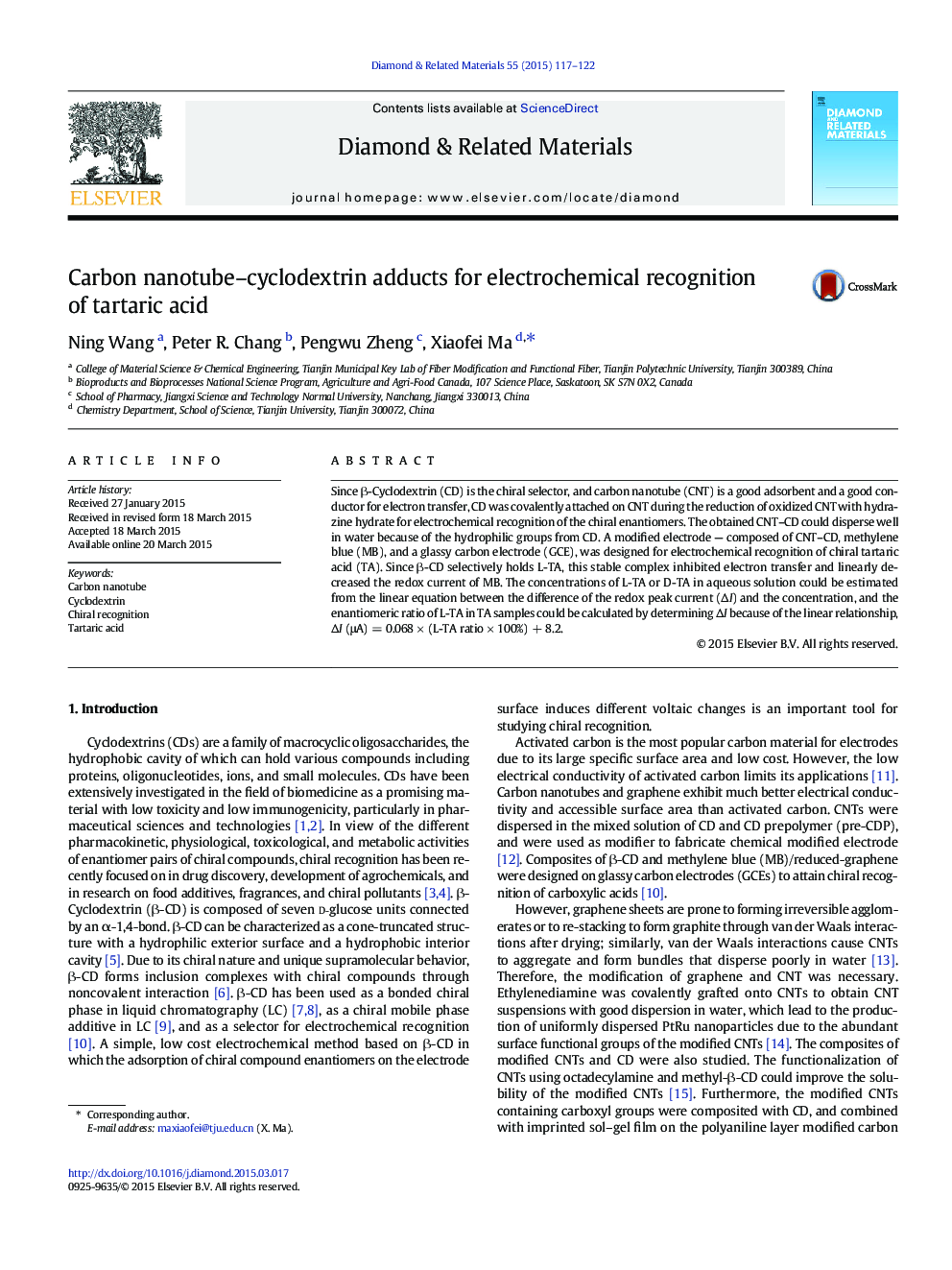| Article ID | Journal | Published Year | Pages | File Type |
|---|---|---|---|---|
| 700679 | Diamond and Related Materials | 2015 | 6 Pages |
•CD was grafted onto CNTs.•CNT–CD can be dispersed well in water.•The electrochemical recognition of TA was researched.•The linear dependence of ΔI on CL is ΔIL = 2.00 CL-5.62•The enantiomeric ratio of L-TA in TA samples can be calculated by testing ΔI.
Since β-Cyclodextrin (CD) is the chiral selector, and carbon nanotube (CNT) is a good adsorbent and a good conductor for electron transfer, CD was covalently attached on CNT during the reduction of oxidized CNT with hydrazine hydrate for electrochemical recognition of the chiral enantiomers. The obtained CNT–CD could disperse well in water because of the hydrophilic groups from CD. A modified electrode — composed of CNT–CD, methylene blue (MB), and a glassy carbon electrode (GCE), was designed for electrochemical recognition of chiral tartaric acid (TA). Since β-CD selectively holds L-TA, this stable complex inhibited electron transfer and linearly decreased the redox current of MB. The concentrations of L-TA or D-TA in aqueous solution could be estimated from the linear equation between the difference of the redox peak current (ΔI) and the concentration, and the enantiomeric ratio of L-TA in TA samples could be calculated by determining ΔI because of the linear relationship, ΔI (μA) = 0.068 × (L-TA ratio × 100%) + 8.2.
